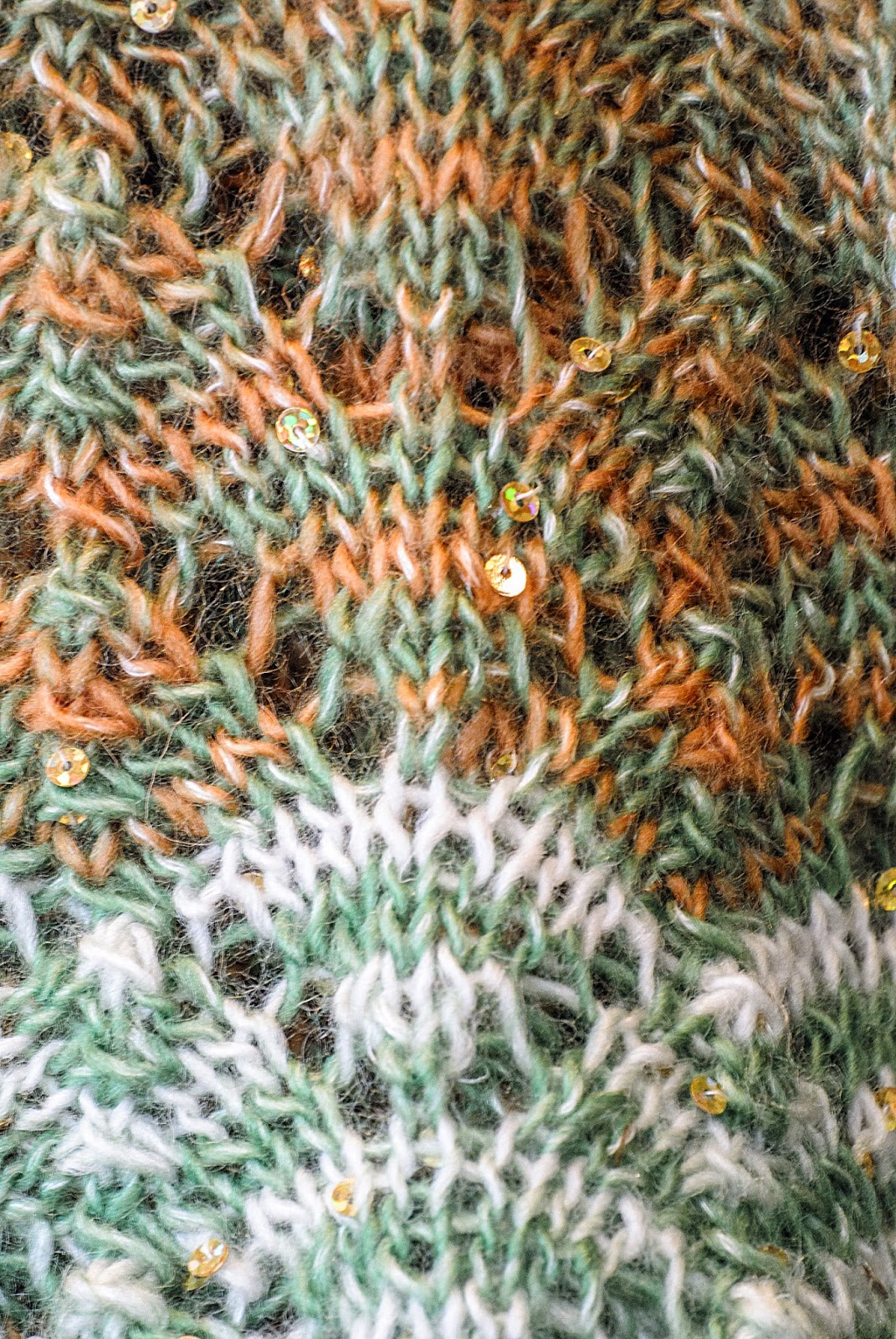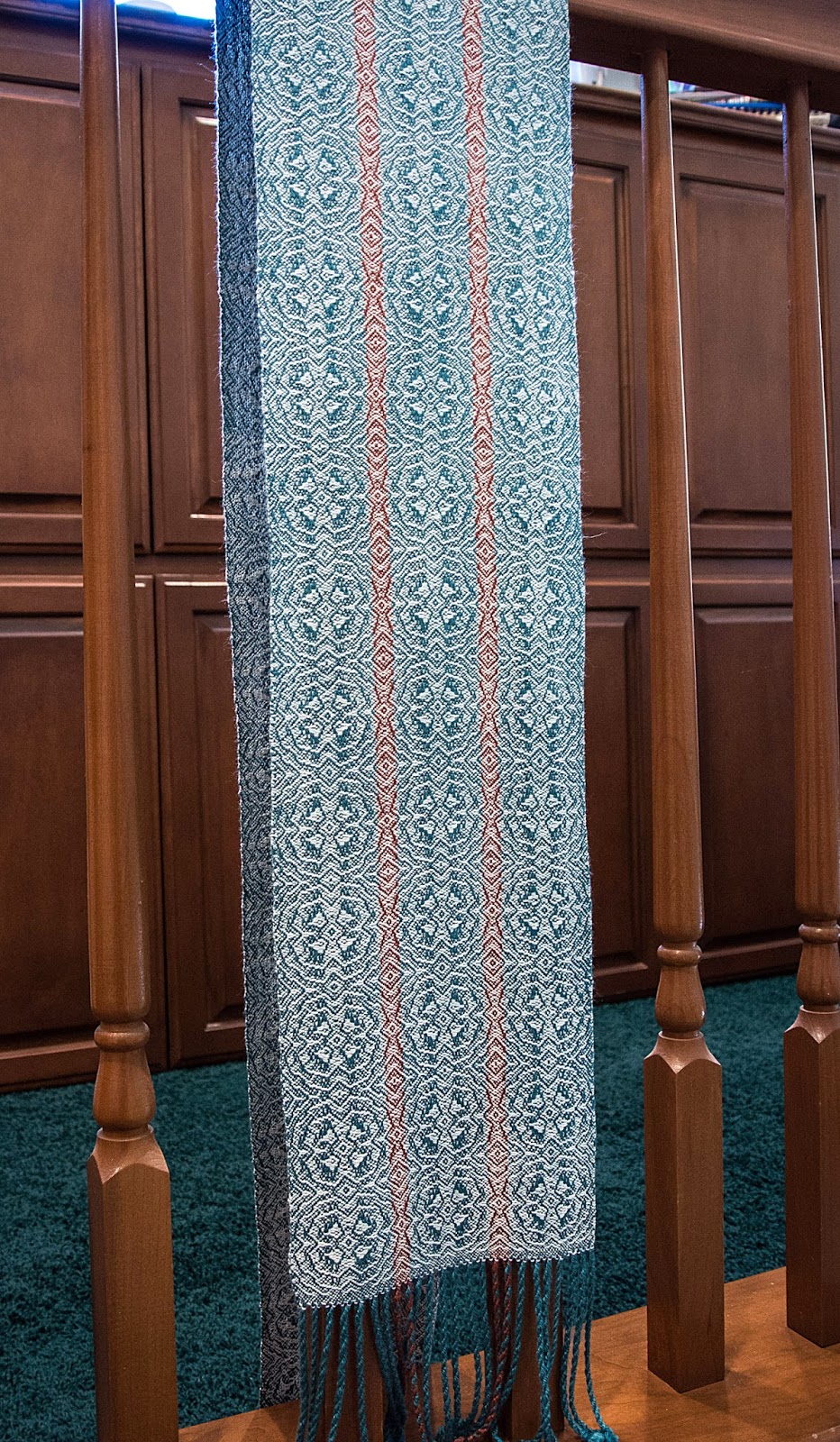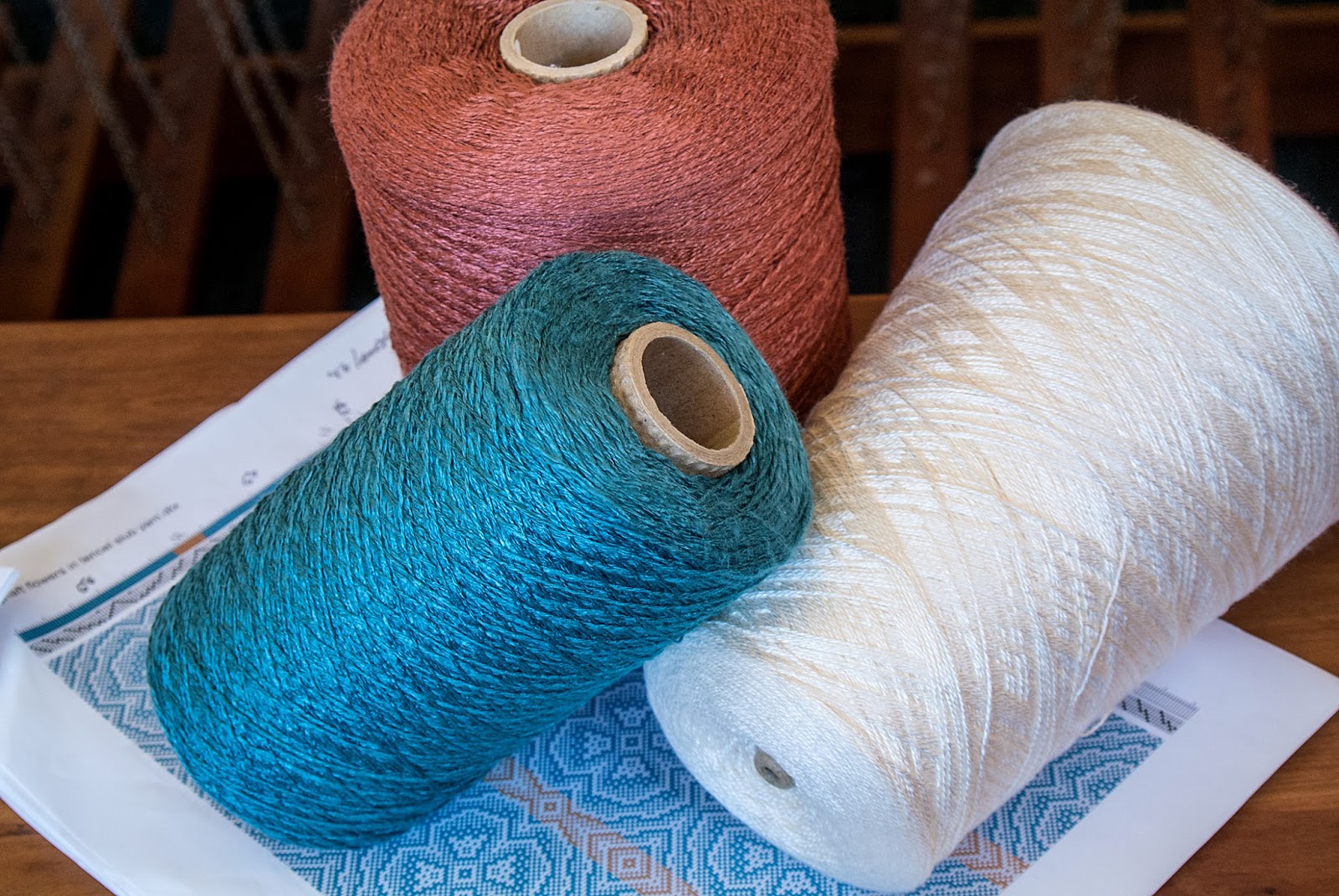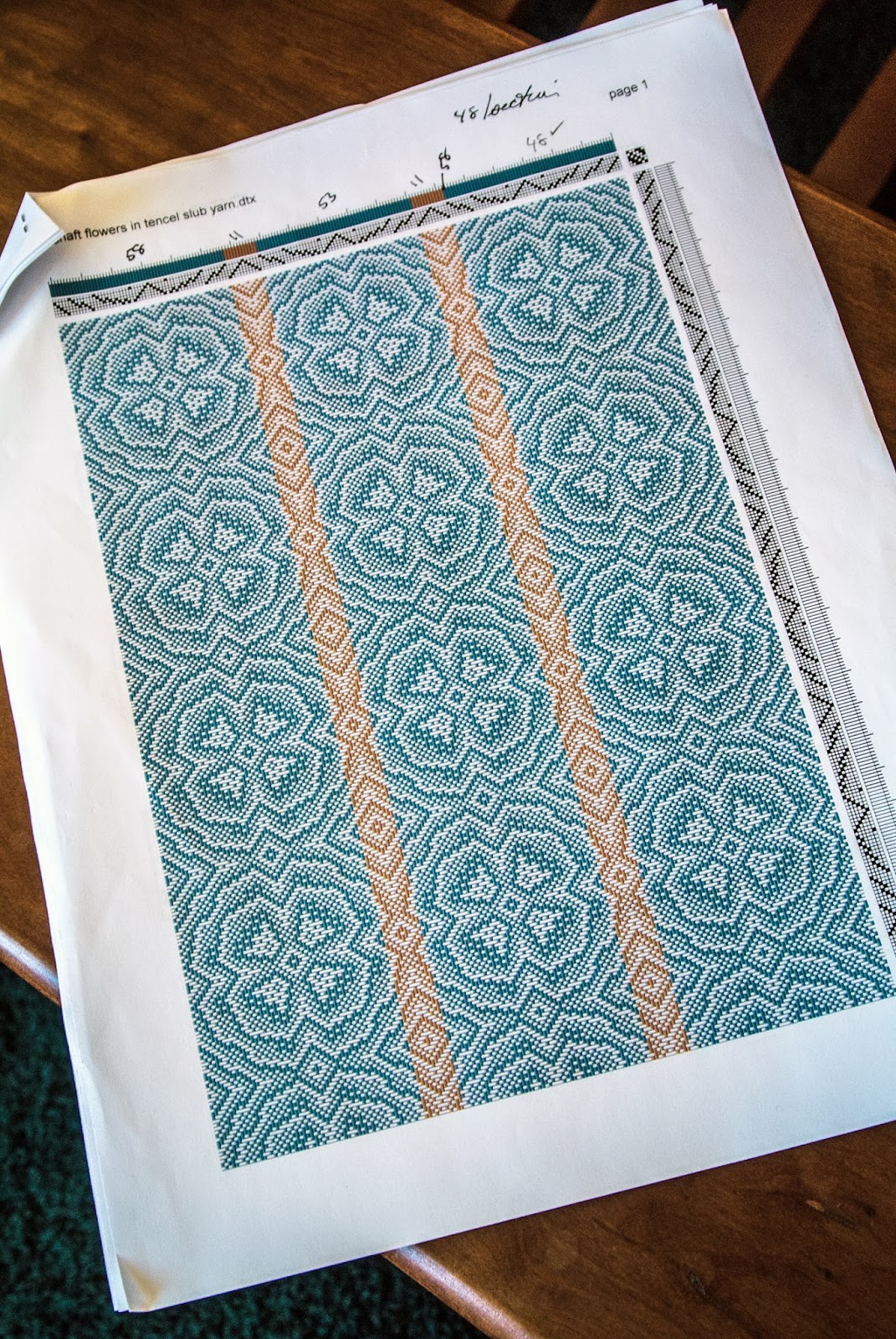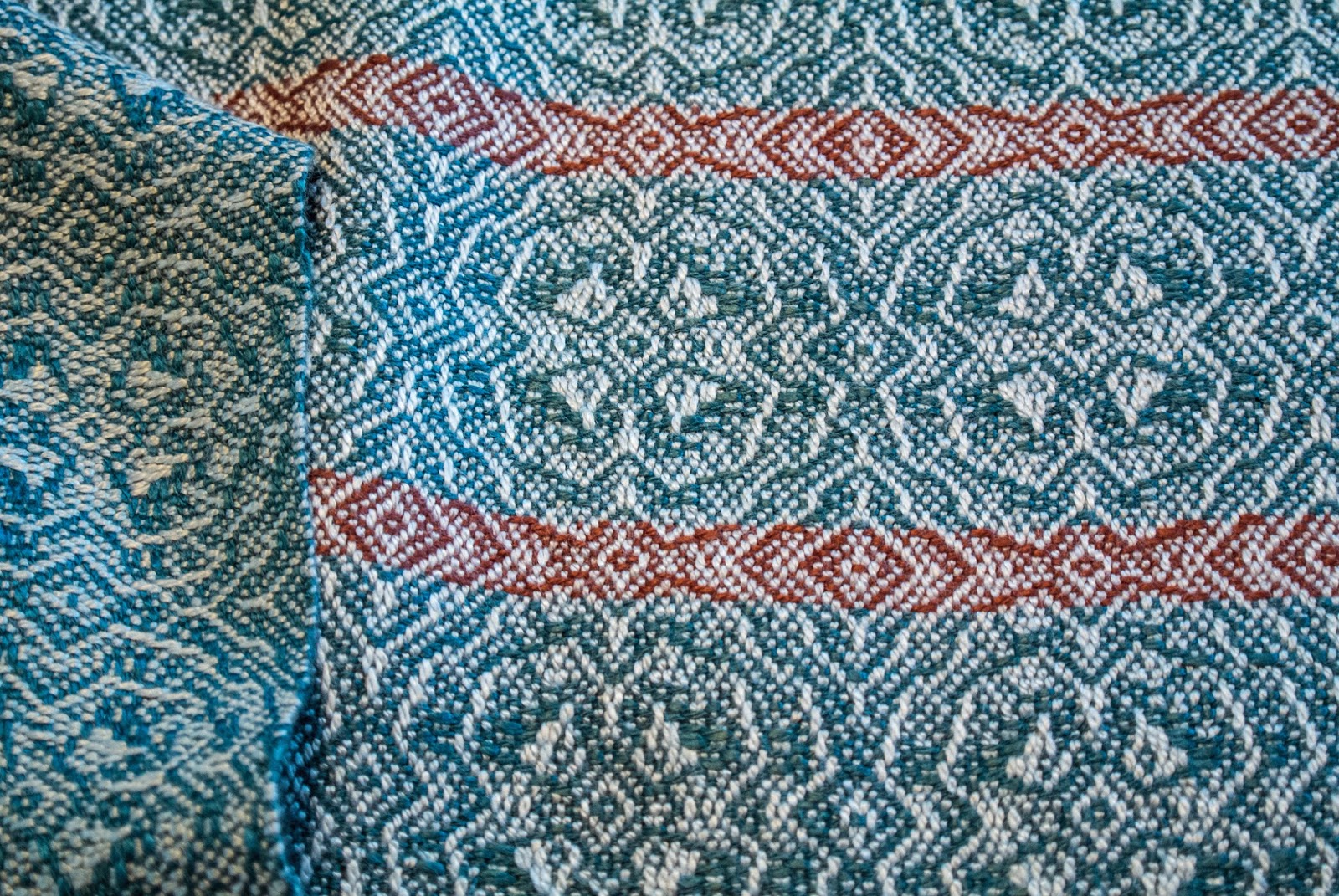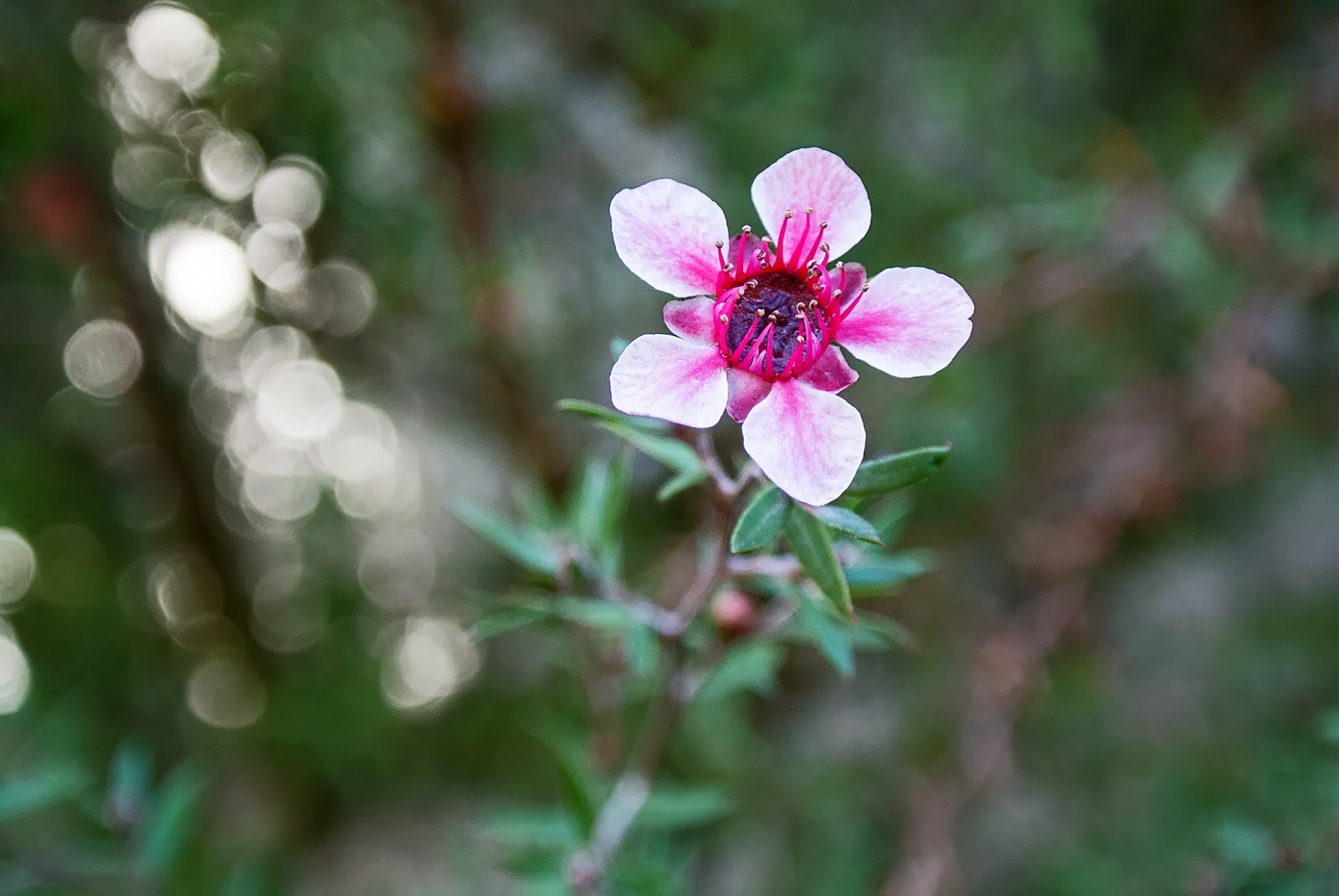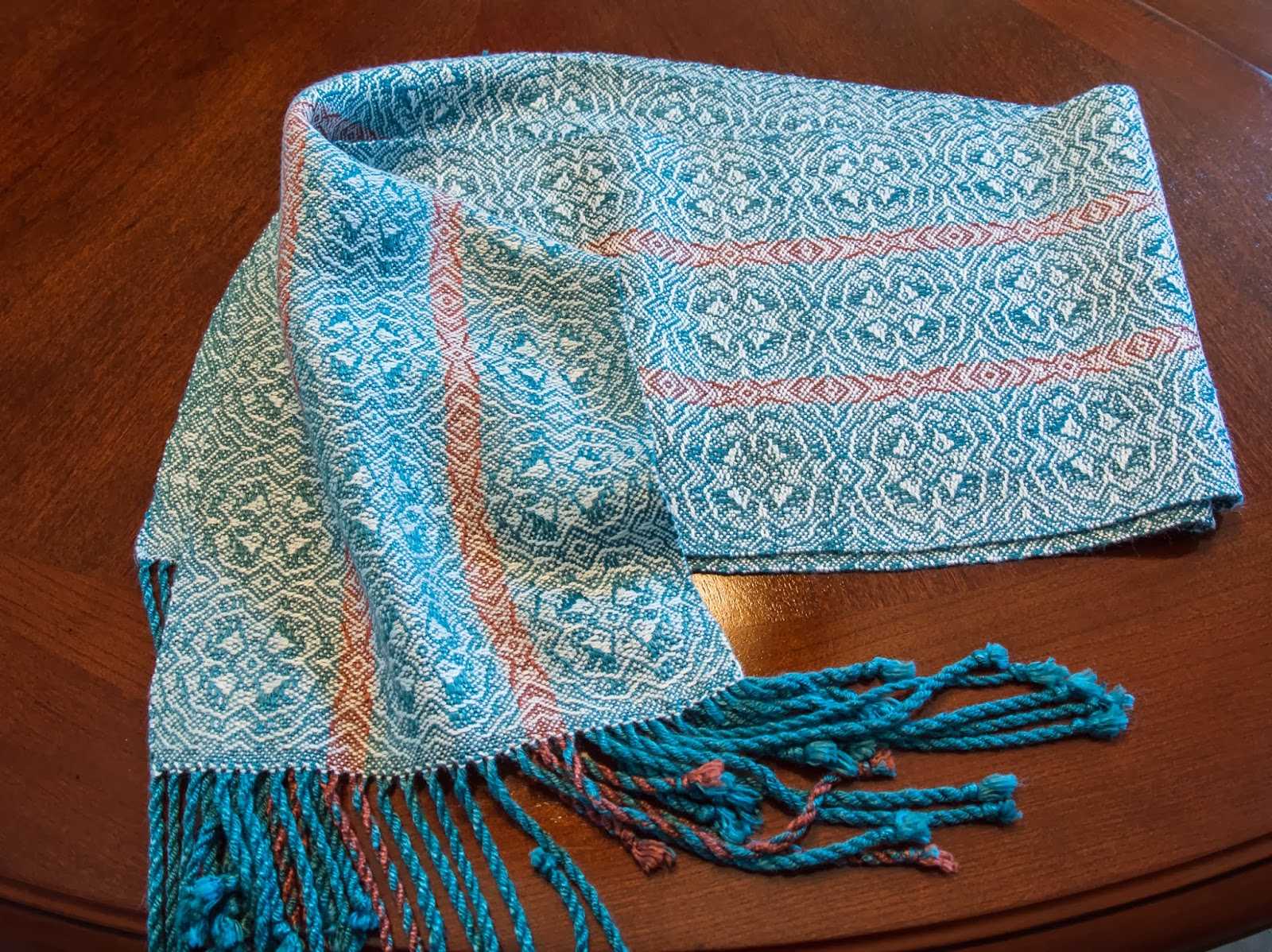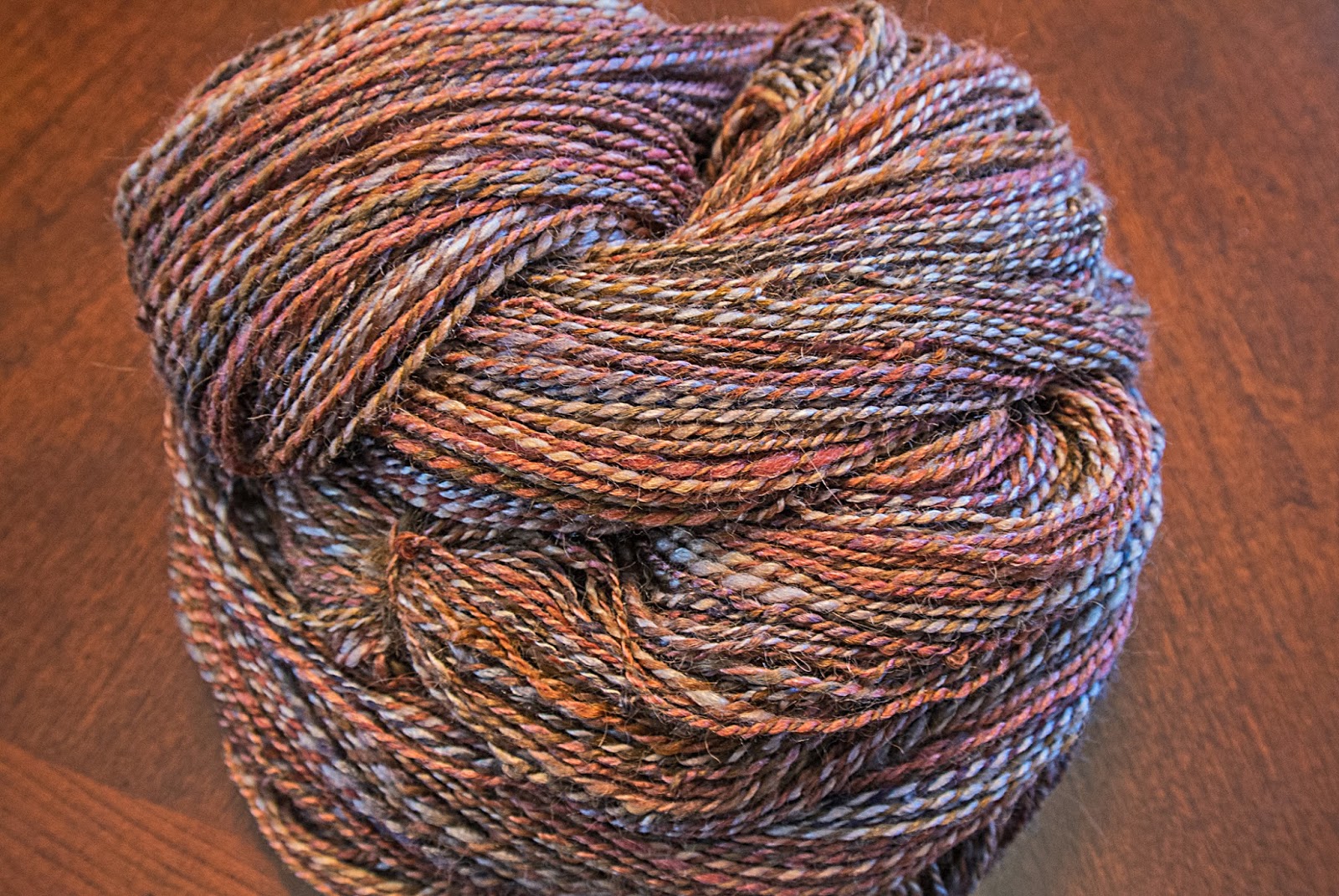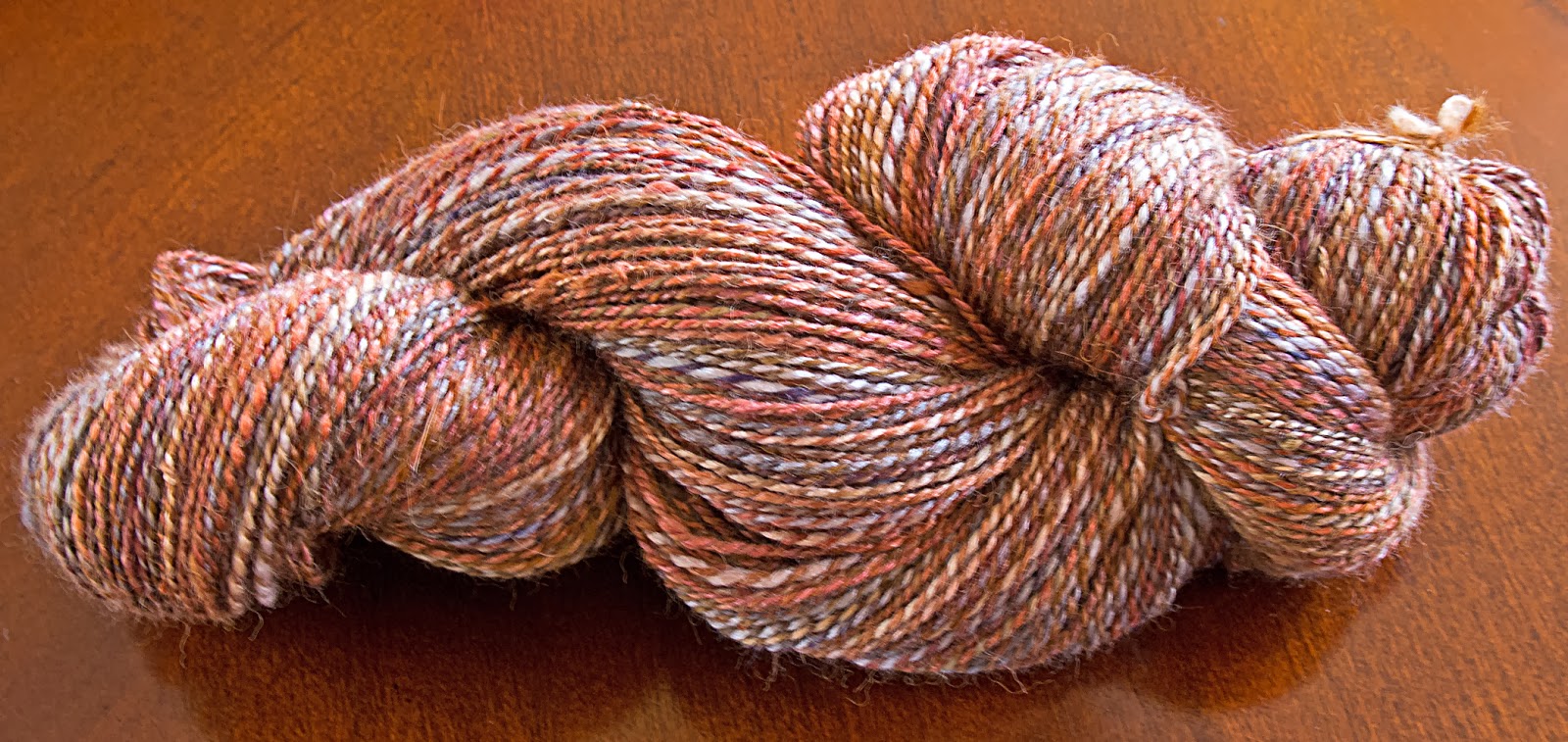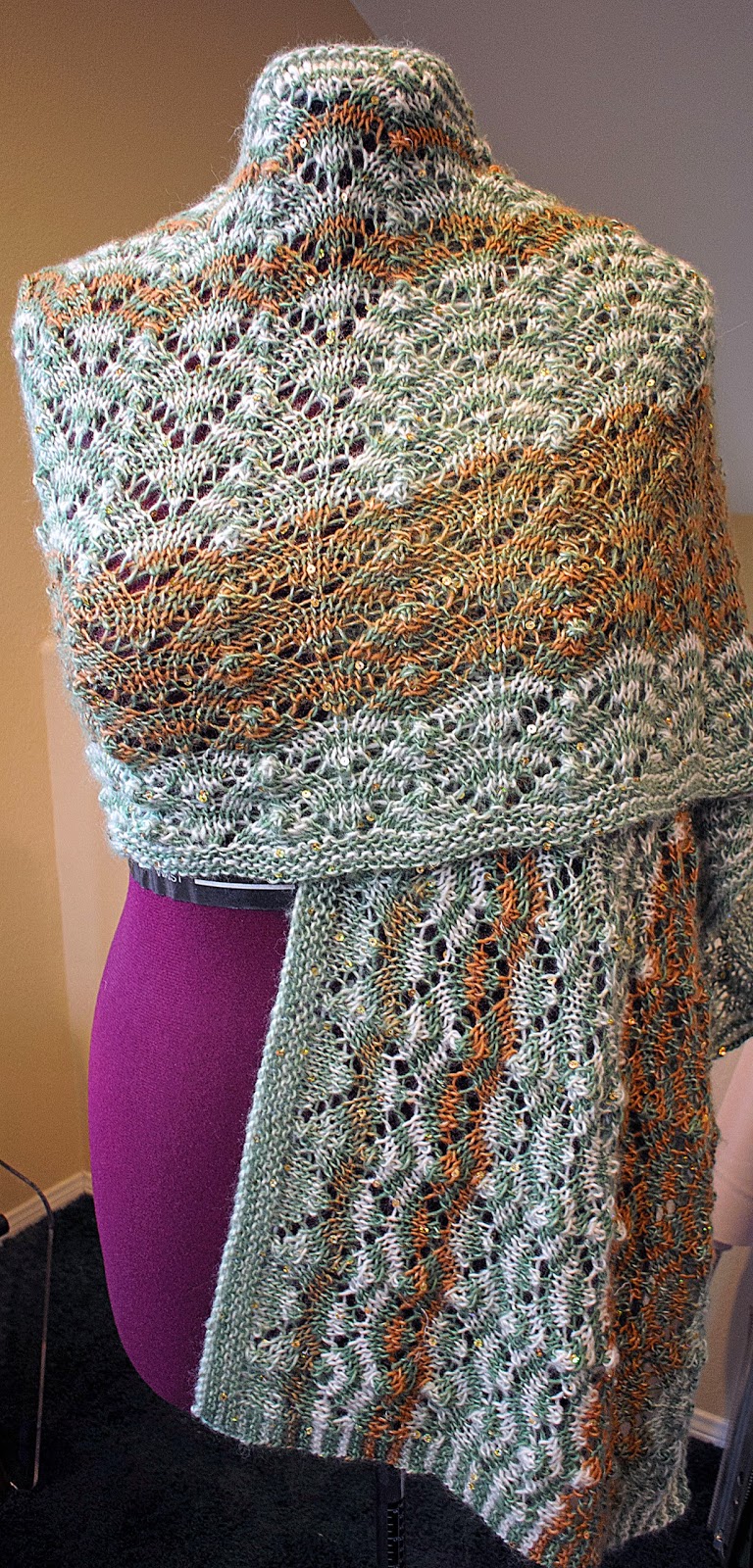 |
| Shawl wrapped on dress form |
On a recent trip to Tuesday Morning, I rummaged through their yarns, which was interesting, since they were in the bottom-most shelf - a very deep shelf. So I just sat on the floor of the store and reached in, turning things over, moving skeins and balls of yarn all around. And then, all of a sudden, I spotted a very pretty ball of Rozetti Polaris yarn - a soft and squishy ball with a lovely hand. It is 65 percent acrylic, 31 percent wool and 4% sequins. It feels a little like a wool and mohair yarn. That particular ball was in a green and white colorway, Pisces, No. 71007. I fell in love with it almost immediately.
 |
| Shawl wrapped differently |
Knowing that I could not do much with one ball, I searched and searched for another but could not find one, whereupon I enlisted the aid of a worker at the store. She unearthed one more, at which point I noticed another colorway, the rust and green, Virgo, No. 71008. Again, only one ball.
For those who are not familiar with Tuesday Morning, it is a retail liquidator of household items. I immediately purchased the three balls of yummy yarn for about $3 apiece. They sell for about $8.50 apiece at retailers who carry them.

I immediately went home and looked up patterns for this lovely yarn, thinking perhaps a pair of socks or a hat and fingerless gloves or a scarf. But what I found when I Googled the yarn was this lovely shawl in two colors.
Hmm, I needed more balls of this stuff. One more Pisces and one more Virgo. Lo and behold, Jimmy Beans Wool in Reno, NV, had both. I live in Southern California, so the closeness of the Reno store appealed to me and I immediately ordered the two balls of yarn and, then, sat down and sampled the lovely lace pattern in this shawl to decide on needle size. I usually have to size down one size, but upon making my sample, I ended up using the recommended US Size 8 needle, a 42-inch Hiya Hiya metal needle.
This pattern has a multiple of 10 stitches plus 1, but it is knitted horizontally, meaning I had to cast on 291 stitches. That is a ton of stitches, but the shawl worked up fairly fast, and the pattern became quickly memorized and was easy to follow.

 When I was finished with it, I began to wonder how the heck to block it. Should I block it like an acrylic or like a wool yarn. I decided to put it on a blocking board (half of it, that is - it is about 77 inches long) and spritz it with water, pinning out the one edge that wanted to curve, just a bit. I patted the water into the yarn, smoothing out the decrease bumps, and left it to dry. Hmm, the wool part was still pretty bouncy and the bumps were too noticeable. So I pulled out my steamer and carefully steamed half of it - steaming and patting, then left it to dry again. Success! I repeated that process with the second half, after which my shawl had grown a bit to just under 80 inches, but I had expected that, since I was trying to relax the yarn and open up the lace.
When I was finished with it, I began to wonder how the heck to block it. Should I block it like an acrylic or like a wool yarn. I decided to put it on a blocking board (half of it, that is - it is about 77 inches long) and spritz it with water, pinning out the one edge that wanted to curve, just a bit. I patted the water into the yarn, smoothing out the decrease bumps, and left it to dry. Hmm, the wool part was still pretty bouncy and the bumps were too noticeable. So I pulled out my steamer and carefully steamed half of it - steaming and patting, then left it to dry again. Success! I repeated that process with the second half, after which my shawl had grown a bit to just under 80 inches, but I had expected that, since I was trying to relax the yarn and open up the lace.
